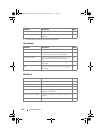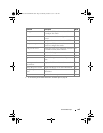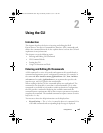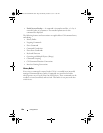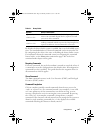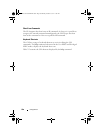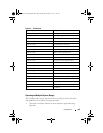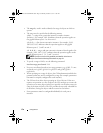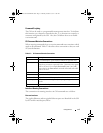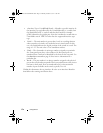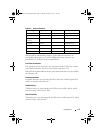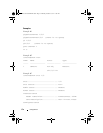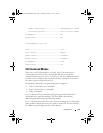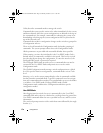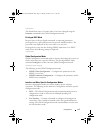
170 Using the CLI
•The
range
key word is used to identify the range of objects on which to
operate.
• The range may be specified in the following manner:
(#-#) — a range from a particular instance to another instance
(inclusive). For example, 1/0/1-10 indicates that the operation applies to
the gigabit Ethernet ports 1 to 10 on unit 1.
(#, #, #) — a list of non-consecutive instances. For example, (1/0/1,
1/0/1,1/0/3, 1/0/5) indicates that the operation applies to the gigabit
Ethernet ports 1, 3, and 5 on unit 1.
(#, #-#, #) — ranges and non-consecutive instances listed together. For
example, (1/0/1, 1/0/3-5, 1/0/7) indicates that the operation applies to the
gigabit Ethernet ports 1, 3, 4, 5, and 7 on unit 1.
NOTE: Each port must be a fully qualified port identifier in the format
unit
/
slot
/
port
. See Interface Naming Conventions on page 171.
• To specify a range of LAGs, use the following command:
interface range port-channel
1-48
• No spaces are allowed anywhere in a range parameter, e.g. gi1/0/1 -2 is not
accepted, nor is gi1/0/2, gi1/0/4. Use gi1/0/1-2 and gi/1/0/2,gi1/0/4
respectively.
• When operating on a range of objects, the CLI implementation hides the
parameters that may not be configured in a range (for example, parameters
that must be uniquely configured for each instance).
• The CLI uses best effort when operating on a list of objects. If the user
requests an operation on a list of objects, the CLI attempts to execute the
operation on as many objects in the list as possible even if failure occurs for
some of the items in the list. The CLI provides the user with a detailed list
of all failures, listing the objects and the reasons for the failures.
• Some parameters must be configured individually for each port or
interface.
2CSPC4.XCT-SWUM2XX1.book Page 170 Monday, October 3, 2011 11:05 AM



